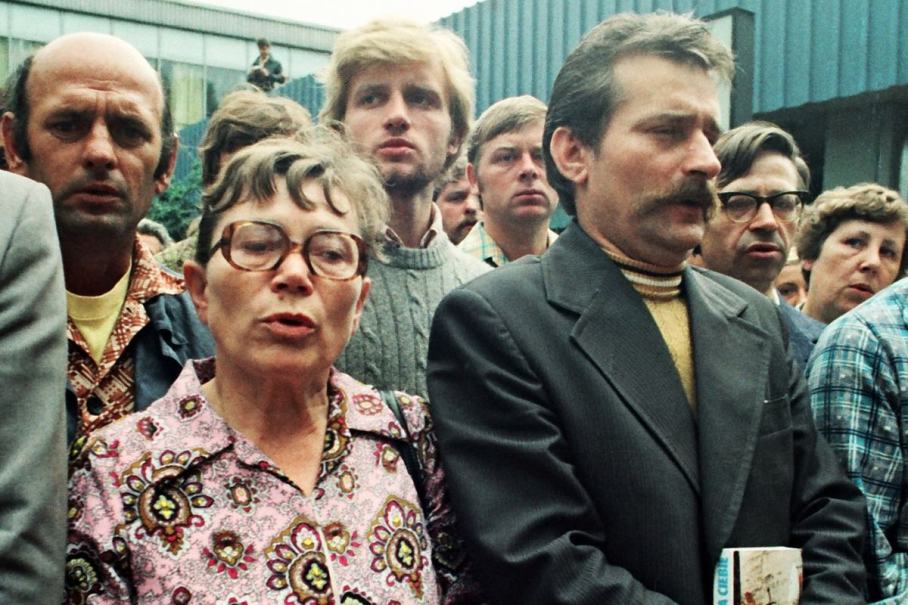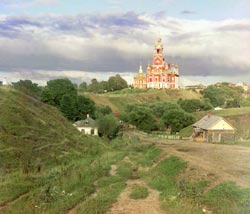The Soviet Union did much to promote a positive image of life within its borders both to the Western world and to its own citizens. However, it is hard to deceive someone about the quality of their own life. By the late 1970’s, the Polish people had become disenchanted with Soviet rule for several reasons. In 1970, worker strikes broke out at the Lenin shipyards in Gdansk. As the decade progressed, more and more strikes occurred due to the stagnated economy. 1980 saw the creation of Solidarity, a movement dedicated to promoting better worker conditions. Negotiations between Solidarity and the Polish government bore no fruit. Continued strikes led to a complete oppression of Solidarity by the military, forcing the movement underground.

Workers praying at the Gdansk shipyard.
The Polish people also had a great point of contention with the Soviets that existed at a more fundamental level. Since its genesis, the Soviet Union had done its best to suppress religion through propaganda and confiscation of Church property. Poland had been a Catholic stronghold for several centuries, and the Church continued to survive through Soviet occupation. In 1978, a Polish Cardinal by the name of Karl Wojtyla was elected as Pope John Paul II. In 1979, he made an historic visit to his home country. In the course of 9 days, nearly a third of Poland saw him – in person. The Soviet authorities expected mere thousands to show up to see him. They were wrong. By a lot. Millions of people flooded the streets wherever he went. One of the most memorable moments came in Victory Square of Old City during a speech that followed the celebration of the Mass. After exhorting his countrymen to courage through hard times and reminding them that history and life must be understood in light of Christ (something blatantly adverse to Marxism) the crowd began to chant “We want God!” Pope John Paul II’s trip to Poland charged the Polish people to remain strong in the faith, which broke the Soviet’s control over the people and exposed the false reality of a great, fulfilling life under the Soviets. The people of Poland wanted more than what the Soviets had to offer. They sought the happiness and truth only the Church could offer.

John Paul II in Poland, 1979
Lewis Siegelbaum. Solidarity in Poland.
http://news.bbc.co.uk/onthisday/hi/dates/stories/june/2/newsid_3972000/3972361.stm
Peggy Noonan. ‘We Want God’. http://www.wsj.com/articles/SB122479408458463941




